Emerald is a beautiful gemstone. Its green and bright color gives people a feeling of vitality. Emerald stones have always been deeply loved. Here is a guide to learn more about emerald stones.
What is an emerald?
Emerald is a precious gemstone belonging to the beryl family. It is known for its unique emerald-green color and is a hexagonal crystalline mineral. The emerald stone symbolizes love, life, happiness, and luck. It is the birthstone of May and the commemorative stone of the 55th wedding anniversary. The chemical composition of the emerald is beryllium aluminosilicate (Be3AL2Si6O18). It contains trace amounts of chromium and vanadium, which give it its signature green color. In the gem industry, emeralds and diamonds, rubies, sapphires, chrysoberyl, and the world’s five famous gemstones. Physical properties of emerald: hardness: 7.5° ~ 8°, density: 2.67 ~ 2.78g/cm3, refractive index: 1.56 ~ 1.60, birefringence: 0.004 ~ 0.010, gloss: glass gloss.
What are the main places where emeralds are produced?
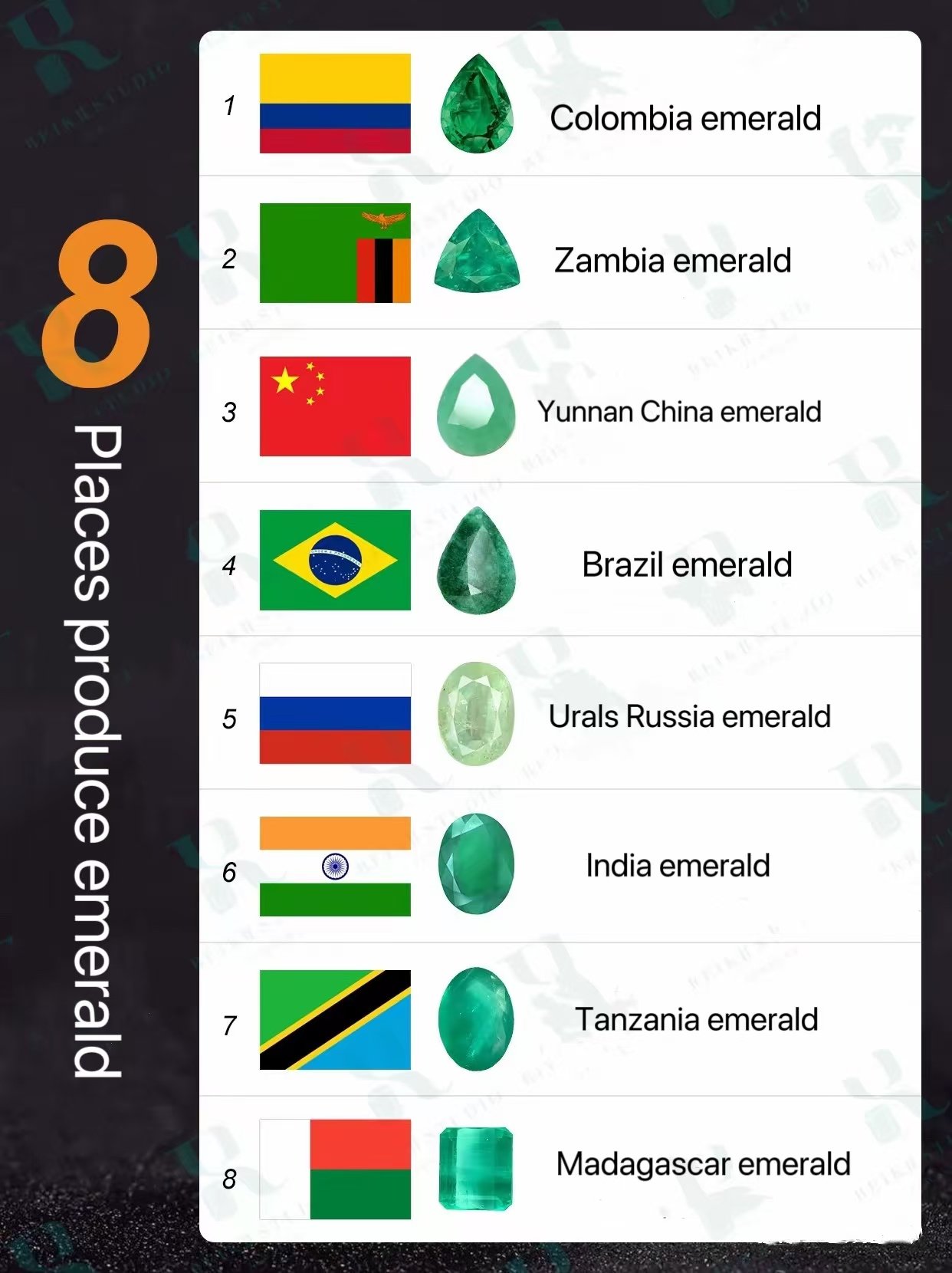
Colombia
Colombia is the world’s largest source of high-quality emeralds; most emeralds are transparent emerald green and light emerald green, and the color is bright and pure. The characteristic is observed with a 10x magnifying glass or microscope, which shows the typical zigzag type gas-liquid-solid three-phase fluid inclusions, pyrite.
Zambia
Zambia is the world’s second-largest producer of high-quality emeralds; the production of emeralds is green, blue-green, and dark green, with bright colors and slightly gray tones. The emerald is characterized by amphibole inclusions containing sheet biotite or columnar horn that can be seen with the naked eye.
Yunnan china
China’s Yunnan is also the origin of emeralds, which are produced in hues including dark green, green, yellow-green, light green, and blue-green. The main feature of emeralds is poor transparency.
Brazil
The emeralds produced in Brazil is mainly dark green and yellow-green, dull and poor transparency, a low-grade emerald. White cloud-like calcite, albite inclusions, sheet biotite and granular magnetite inclusions, and layered gas-liquid inclusions under the naked eye or a 10x magnifying glass characterize it.
Urals, Russia
Emeralds produced in the Russian Urals are yellowish-green and relatively dull in color. They are characterized by stone inclusions with lamellar biotite and bamboo activate, which are visible to the naked eye.
India
The emeralds produced in India are yellowish-green in color and have a darker color. Features are comma-shaped negative crystals or empty inclusions visible to the naked eye or under a 10x magnifying glass.
Tanzania
Tanzanian emeralds are usually yellowish or bluish in color and have a generally small grain size. Thus, they are typically used as jewelry raw materials.
Madagascar
Madagascar emeralds are light blue-green and bright in color. The interior of the gem is cleaner and less defective.
What are the colors of emeralds?
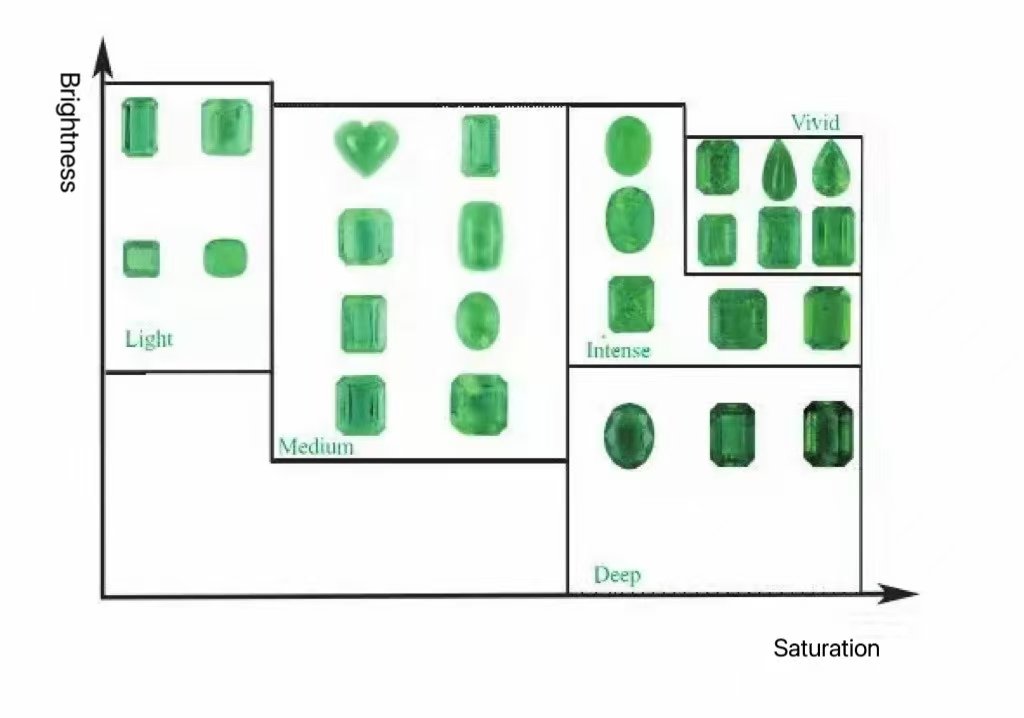
The color grading of emeralds is very meticulous. In addition to the top Verdant Green, several other grades make up the rich diversity of emerald colors. According to gemological standards, the color of emeralds can be divided into:
Light: This grade of emerald is lighter in color and may be close to yellow-green or light green, not as saturated as the top color.
Medium: The color is a little darker than light, but it is not yet vibrant, and it is a balanced green.
Intense: This grade of emerald begins to become fierce in color, and the green is more vivid, but it has not yet reached the highest saturation level.
Vivid: Vivid green is an essential grade of high-quality emeralds, reaching high saturation and brightness. It is a crucial indicator for evaluating high-quality emeralds. Among them, “MUZO Green” is also a brilliant green grade. However, it refers to emeralds from Colombia’s Muzo mining area that meet specific color standards.
Deep: Dark green emeralds are rich, but excessive dark colors may reduce their transparency and visual appeal.
Among these color grades, Verdant Green and Muzo green are well known because they represent two different standards of evaluation of the top emerald colors in the industry. Verdant Green emphasizes the brightness, lightness, and saturation of color regardless of origin. While Muzo green is also the top green, it is associated with the Muzo mining area in Colombia. Therefore, fans and collectors of emeralds can decide according to personal preference and these color grades when choosing.
How to distinguish between natural and cultivated emeralds?
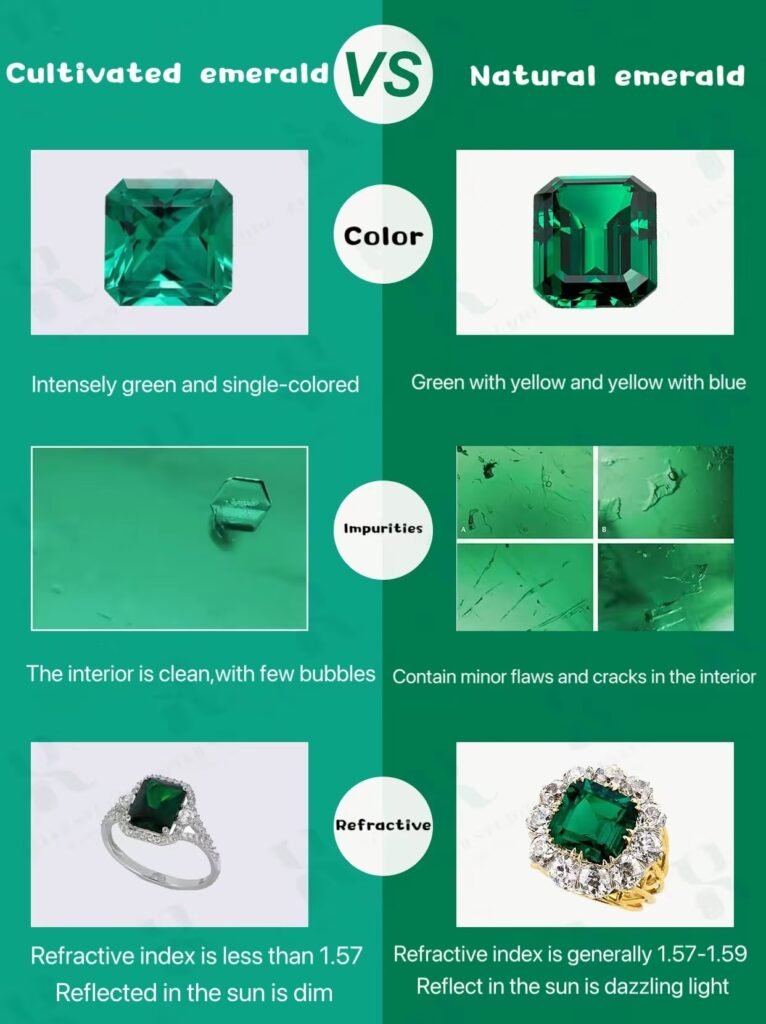
Natural emeralds are pleasing to the eye, beautiful and soft, rich and pure green, and rare in nature. The cultivation of emeralds is done in the laboratory using artificial methods to simulate the growth environment of natural emeralds. Their physical and chemical properties are identical because the simulated growth environment is similar. It can be challenging to tell the exact difference between natural and cultivated emeralds. In addition to observing with the naked eye under a magnifying glass, some instruments should also be used for observation. It can be more accurately distinguished.
Observe the emerald color
The colors of cultivated emeralds and natural emeralds are different. Cultivated emeralds are intensely green and single-colored, while natural emeralds are unique and diverse, green with yellow and yellow with blue, a three-color mixture.
Look at the impurities that emeralds contain
Emerald cultivation and natural emerald impurities are also different. Emerald cultivation is synthetic, and the interior is clean, with few bubbles. Most natural emeralds contain minor flaws and cracks in the interior, with wadded impurities. The most representative inclusions of natural emeralds are three-phase inclusions typical of Colombian mining areas.
Measure the refractive index of emeralds
The refractive index of cultivated emeralds and natural emeralds is also different. The refractive index of cultivated emeralds is less than 1.57, which means the light reflected in the sun is dim, while the refractive index of natural emeralds is generally 1.57 ~ 1.59, which can reflect dazzling light.
How to distinguish between good and bad emeralds?
Color
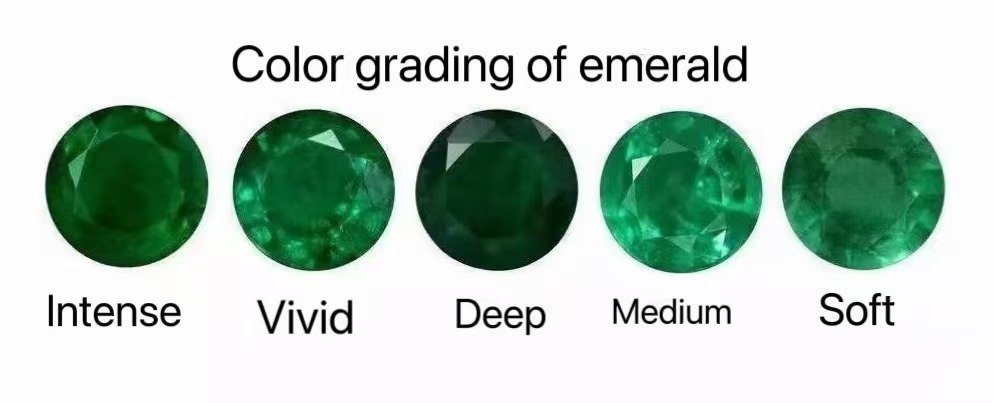
Emeralds and diamonds are different. Color is an essential factor in determining the value of emeralds. When choosing emeralds, we first focus on their color. The more saturated the color, the better. If the saturation is low, the gem’s surface will have a different degree of gray tone. Bright green is the highest level of emerald, followed by bright green, dark green, medium blue, and soft green.
Carat
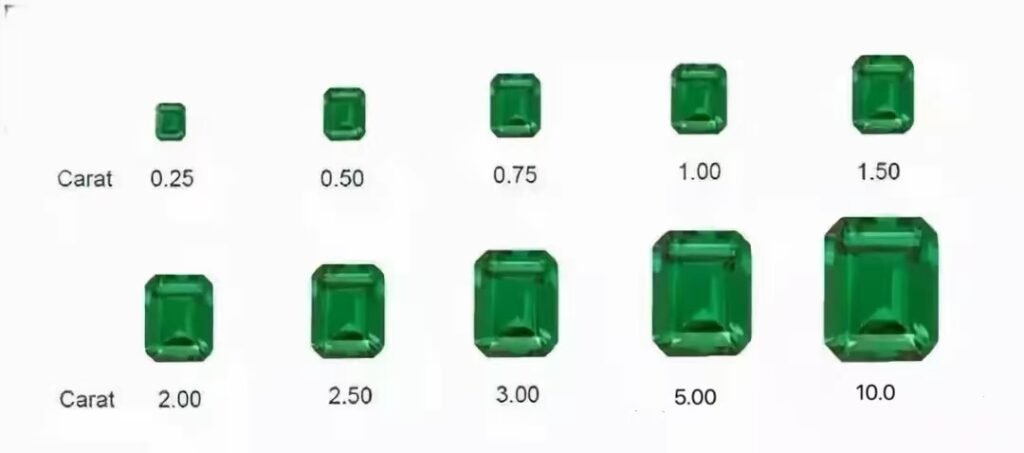
Enormous emeralds are good, as are almost all gemstones. Like diamonds and red and blue gems, emeralds also have a carat premium, meaning that a 5-carat stone is much more than 5 times the price of a 1-carat stone. Because there is no standard international pricing system like diamonds, emeralds do not have a particular span in the price performance of the carat threshold.
Clarity
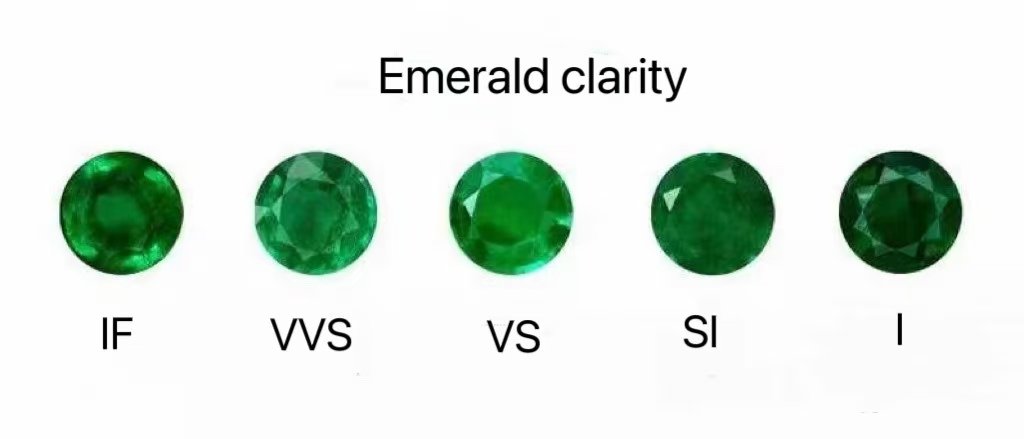
Clarity is one of the main indexes for evaluating emeralds. Compared with other gemstones, the glass luster of emeralds makes the inclusions of gemstones more evident during the formation process. The emerald, the naked eye can see the flaws in general, belongs to a high-quality gemstone. The diamond must also be observed clearly under a 10 times magnifying glass. However, because the impurities contained in the emerald are generally more apparent than the diamond, the naked eye can be observed.
Fire color
Many people pay attention to fire color when choosing diamonds. However, fire color is also essential for emeralds. How can we identify it? We can shake the emeralds lightly; the more light, the better.
Cutting
Emerald is one of the most difficult gems to cut; most emeralds use a long trapezoidal cutting method; this cutting method can maximize the luster of the gem reflected and now has become the most common diamond cutting process if you do not use a long trapezoidal cutting of the gemstone glossiness is relatively poor, must pay attention to observe when selecting.
How to care for emeralds?
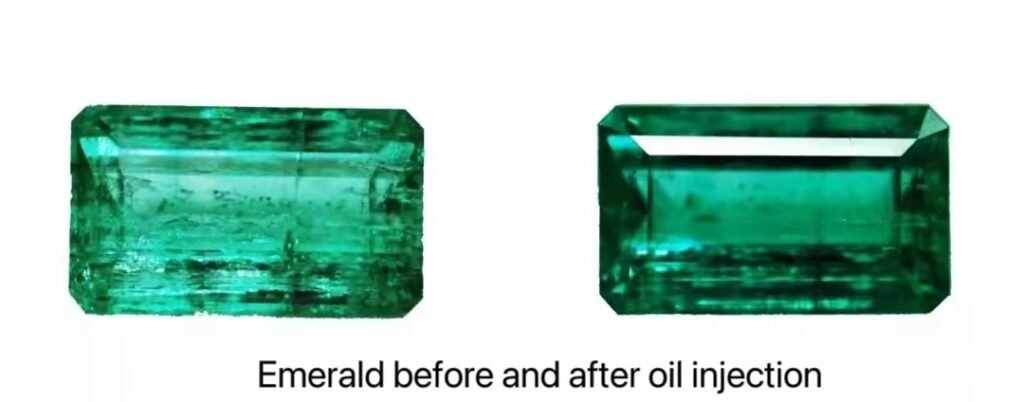
Emerald maintenance should use colorless natural oils like cedar and pine tar. If these two kinds of oil do not have natural palm oil, olive oil, and so on, natural cedar oil is the first choice for curing emeralds.
Oil-free emeralds: about every 20-24 months of external maintenance, oil-free emeralds will not cause oil to enter because of external maintenance (cracks determine oil-free oil) and can be understood as oil-free emeralds adding a layer of protective film.
Insignificant oil emerald: about every 12-15 months to do deep maintenance; Very oily crystals are excellent; Maybe once a year or so is enough.
Micro-oil emerald : About every 6-8 months every six months to do a deep maintenance
Minor to Moderate emerald: maintenance about every 6 months; Medium oil maintenance about every 3 months.
What should you pay attention to when wearing emerald jewelry?
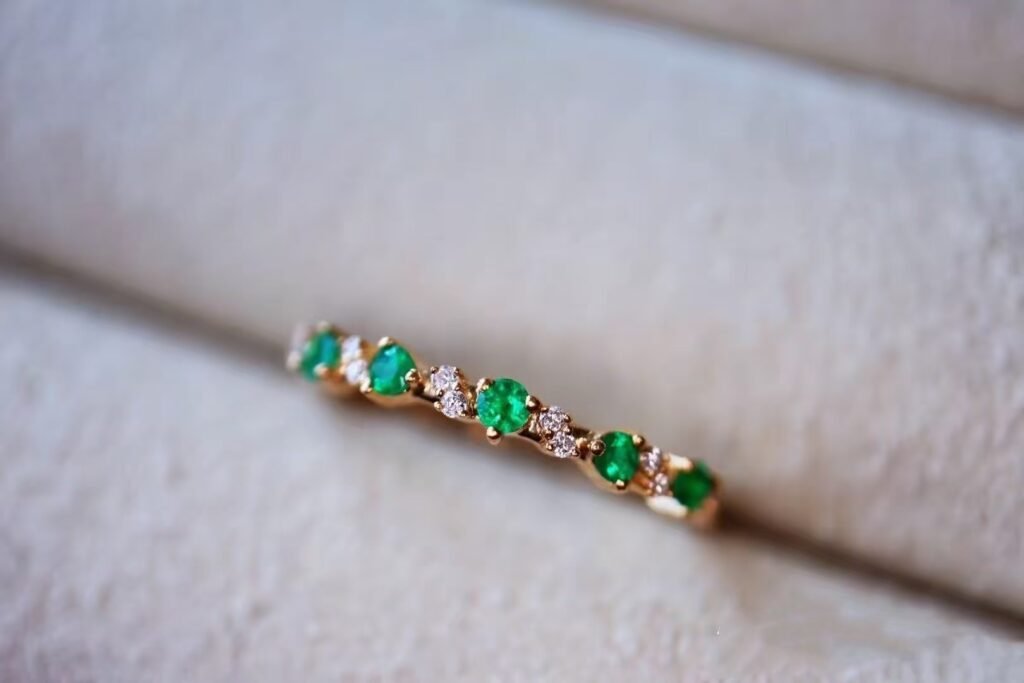
Collision avoidance
Emerald is a stone with a low hardness; the Mohs hardness of emerald is between 7.5 and 8, and as a member of beryl, the hardness of emerald is lower than that of red sapphire in the corundum group, with average to good toughness. Emeralds must not rub with other gems or metals to avoid scratches on the gem’s surface but also to prevent bumping, causing damage to the edges and corners. Suppose you need to engage in physical labor or strenuous exercise. In that case, the jewelry should be removed to avoid collision so that the internal cracks in the gem are avoided.
It is not suitable for oily smoke
Good quality emeralds should not stay in the place of oil smoke for a long time; oil smoke has an erosion effect on the surface of the emerald, which will damage the surface luster of the gem. Therefore, you should avoid wearing emerald jewelry when cooking or in places with soot.
Avoid high temperature
Emeralds significantly avoid high temperatures. Some of the emeralds filled with oil will reveal defects at high temperatures, so it is best to take off the emerald jewelry before a long soak bath; in addition, the overheating temperature makes the internal crack of the gem or expand the original internal inclusion, so be careful when repairing emerald jewelry, and ask professionals to fix it.
Wash the emeralds with water
Emeralds are often treated with oil to hide cracks and increase transparency. Therefore, when cleaning emerald jewelry, emeralds can not come into contact with acid, alkali, alcohol, ether, and other substances. They destroy the filling material in the crack, thus reducing its transparency. Do not use ultrasound and steam to clean the emerald jewelry; ultrasound will make cracked emeralds more fragile; hot steam may cause the oil or resin to melt and flow out of the emerald cracks. Therefore, it is best to clean emerald jewelry with water.
How to clean emeralds?
When cleaning emeralds, use running water at room temperature with a gentle brush and a neutral hand sanitizer. Clean the emerald jewelry from the lower part to remove sticky oil. So you can see that the emeralds are getting brighter little by little. Rinse with warm water and dry with a soft towel.
What is the approximate price of the emerald?
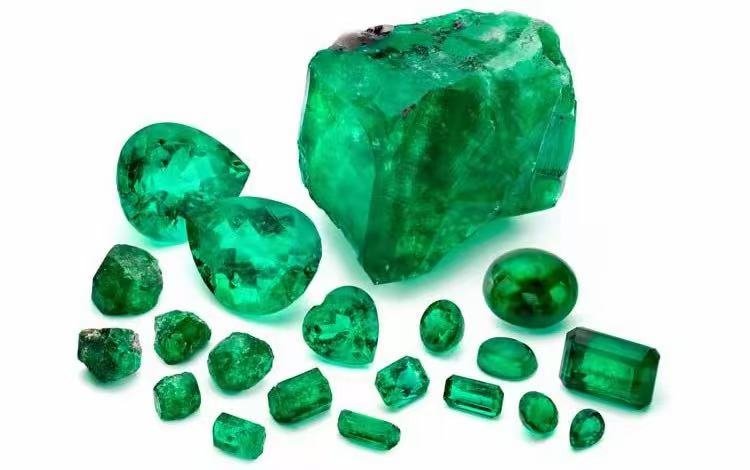
The price of emeralds varies significantly due to their quality, size, origin, and handling conditions. The following are the approximate price ranges based on quality:
High-quality emerald
Oil-free emeralds with bright colors and clarity can be as high as $5,000 – $12,000 per carat.
Oil-free emeralds, which have a good finish but are lighter in color and have slight cracks, cost between $1,000 – $5,000 per carat.
Medium quality emerald
Emeralds of medium color, slight concealer, and crystal are generally priced at about $300-1500 per carat.
Low-quality emerald
Emeralds with light gray color, cloudy crystals, and more defects may cost between $10 – $300 per carat.
Emeralds treated with oil
The price of oil-treated emeralds is relatively close to the people, and the cost of good emeralds is more than $1,000-1,500 per carat. In contrast, excellent emeralds can even exceed $8,000 per carat.
What kind of emeralds can you buy for different budgets?
If your budget is between $1000–$3000, you can choose about 1 carat Zambian or better quality Afghan emeralds.
If your budget is in the $3,000-$5,000, consider 1 carat Afghan or close to 1 carat Colombian emeralds.
If your budget is between $5,000–$7,000, you can buy Colombian or large carats of Zambian emeralds over 1 carat.
If your budget is over $7,000, consider high-quality Colombian emeralds or large carats of Zambian emeralds.
Please note that these are estimated prices based on specific qualities and markets, and actual prices may vary depending on market fluctuations, supply and demand, and purchase channels. The cost of growing emeralds is relatively low, around $100 per carat, making it a more economical option for those who love emeralds on a budget.